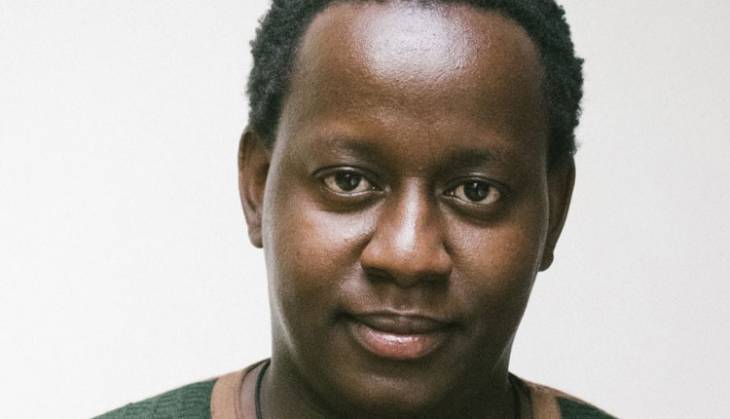Art’s resurgence points to a promising future
By Harriet.James, January 10, 2022
The year 2021 was somehow a great year for the art fraternity with a few developments that would mean progress for the industry players.
While art was a tough territory in the years gone by since it was not treated as a serious profession, the Covid 19 pandemic made things even tougher.
However, the internet is one of the tools that has made art popular in the country, particularly last year.
“It was also difficult to sell artworks in the past, but social media sites such as Instagram have levelled the playground for everyone.
With little or no advertisement, I can now reach potential buyers and art collectors,” visual artist Victor Omondi aka The Colour Al Chemist tells Spice.
Victor is one of the artists who have used the internet, thanks to the pandemic, to push their work and gain more audience.
He has since started his YouTube channel, Victor Omondi Art, to teach art lovers how to paint.
“I recommend artists to maximise the use of the online space instead on fully relying on galleries, which are struggling because of the pandemic,” he adds.
Shot in the arm
Digital artist Timothy Gichuru, the founder of Benir Africa, has also noted the rise in technology in the art spaces.

“I can say technology plays a huge role in digital art. It has forced me to purchase a good graphics tablet and a computer that runs smoothly for efficiency at work.
The pandemic has also changed how work and meetings are done in relation to advertising and digital marketing,” he notes.
He also observes that more people will be inclined to digital drawings compared to realism leading to the rise in the number of artists who do such type.
He says, “I think more people are into this kind of art since the pictures are more manipulative and they can change a lot of things if the pictures are drawings like the size of an eye or the style of the hair.”
In July 2021, there was a national visual art residency in Nairobi, the first of its kind in the country. Represented by 40 up-and-coming artists from 16 counties, it took place for 10 days at the Karen Village arts centre.
While some private galleries and art collectives have offered curated residencies, there has been nothing done to the scale of national residency.
This birthed the creation of the Association of Visual Arts and Collectives (AVAC), a non-profit association that aims at building partnerships between the arts community and government.
“The residency aimed at bringing together budding artists to produce artworks under the tutelage and mentoring of accomplished artists in their respective fields,” says Dr Kiprop Lagat, culture director at the Sports, Culture and Heritage ministry.
The year too saw a rise in art fairs, exhibitions and workshops while observing the Covid-19 protocols.
It also saw some artists breaking the traditional use of galleries to sell their art in hotels, restaurants, hospitals, any space that their art can be appreciated.
The year 2021 also saw a proposal presented by the National Museum of Kenya (NMK) to the government to create a national art gallery.
It would be a place where the significant role of art in documenting the historical, social as well as the cultural evolution of a country is appreciated.
The artists also came together to talk about mental health affecting artists in a group exhibition by the Brush Tu Artists’ Collective held at the Alliance Française, Nairobi, in September.
“The exhibition sought to suggest methods of coping with mental, emotional and other health issues that might have been brought about by the pandemic,” artist Michael Musyoka says.
The exhibition featured works by nine of of the collective’s 12 artists namely: Boniface Maina, Michael Musyoka, Sebawali Sio, Kimani Ngaru, Abdul Kipruto, Moira Bushkimani, Lincoln Mwangi, Peteros Ndunde and Emmaus Kimani.
Another major issue in the year that was, is the on-going debates on the repatriation of cultural artefacts that were plundered during the colonial era.
Icon bows out
Last but not least, we ended the year with the loss of an icon in the art scene.
Alan Donovan, who dedicated his life in collecting and promoting African art in Kenya and beyond the continent, died on December 5, 2021.
Together with the former Vice President Joseph Murumbi, the two created the African Heritage Gallery that was built between 1989 and 1994 in Mlolongo, Machakos county.
It’s inspiration was drawn from the mud architecture of the Great Mosque of Djenné in Mali.
The house was declared a national monument in 2016 and has been dubbed Africa’s most photographed house.
In May 2021, Donovan had expressed the intention to sell his life-long investment in the gallery for Sh320 million.
Sports, Culture and Heritage CS Amina Mohamed stated during Donovan’s funeral last December that the government would continue to support his vision.
“We will continue working on this project together and make this vision come true.
Not for Alan, but for each and every one of us and every African child coming after us,” said Amina.
Nevertheless, art sector stakeholders remain positive that 2022 will present great opportunities for the African art, which in the long-run will prove beneficial for artistes, especially for their financial well-being.